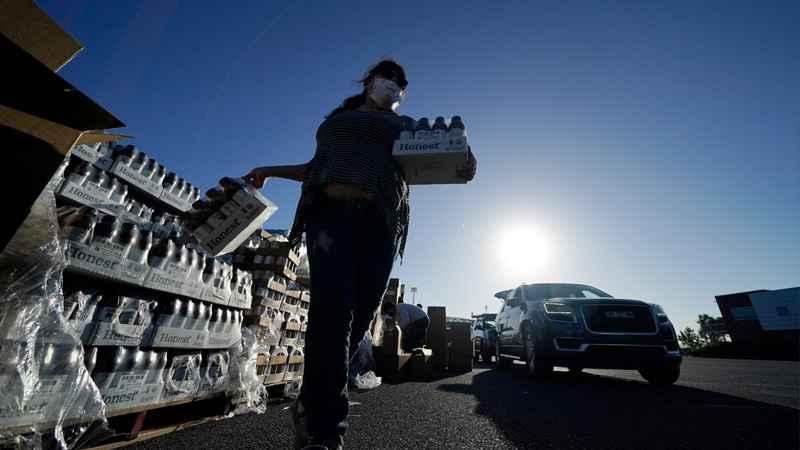Pandemic drives increase in visits to Minnesota food shelves

FILE - Volunteers distribute food to people who waited in line in their cars overnight, at a food distribution point in Metairie, La., Thursday, Nov. 19, 2020.[AP Photo/Gerald Herbert]
Minnesota’s food shelves saw a big jump in need in 2020 amid the coronavirus pandemic and the resulting economic instability, according to an annual report released Friday.
Hunger Solutions Minnesota, which collects data from 350 food shelves across the state, said they saw a record 3.8 million visits in 2020, up 7% from the year before, led by a 31% jump in visits by older people.
Those numbers represent both the “great need” statewide, and the “great work” by programs to adapt how they provide services and to take advantage of state and federal COVID-19 relief funding, said Colleen Moriarity, the group’s executive director. Hunger Solutions distributed $21 million of that aid money to food programs across the state.
The Minneapolis-St. Paul area saw the greatest increase in need for food. Visits were up 17% overall and 39% among older residents in Hennepin County, which includes Minneapolis.
“The primary reason we saw such a steep increase in food shelf use had to do with the economic insecurity brought on by COVID-19 as well as the civil unrest during the George Floyd murder and subsequent rioting,” the Rev. Jeff Nehrbass, who runs The Camden Promise in north Minneapolis, said in a statement accompanying the report.
Food shelves in several rural Minnesota communities saw big increases in visits by older residents, the report said. Many of them adapted to the increased demand by spending relief funds on vehicles for delivering food to residents who otherwise might have been reluctant to visit a food shelf in person, it said.
The 7% growth in visits by children likely would have been much higher if not for increases in federal programs serving low-income families such as the Supplemental Food Assistance Program, formerly known as food stamps, the report said. Also helping were grab-and-go school lunches available to children in distance learning.
The Minnesota Department of Health on Friday reported 1,054 new coronavirus cases and 22 more deaths, raising the state’s totals to 466,224 cases and 6,273 deaths. The state’s positivity, new case and death rates continue to head downward. The department said 497,843 people had received at least one vaccine dose as of Wednesday, or 9% of the state’s population, including 138,212 who’ve had both shots, or 2.5% of the state.